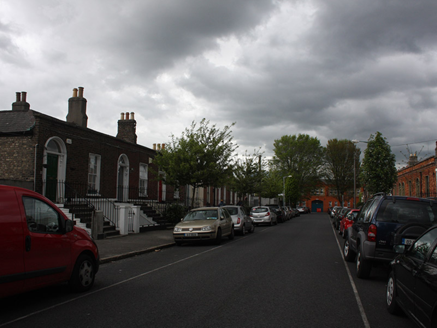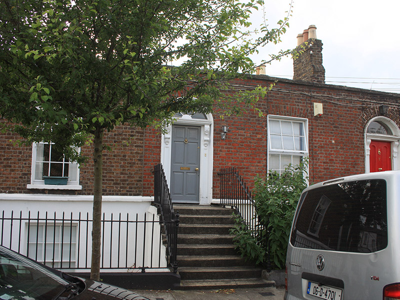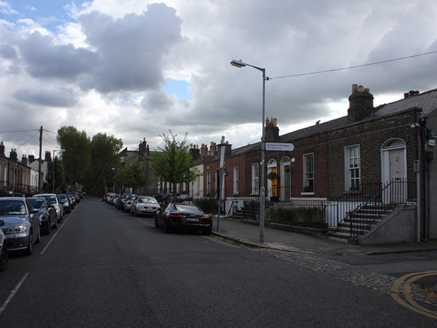Survey Data
Reg No
50110329
Rating
Regional
Categories of Special Interest
Architectural, Artistic
Original Use
House
In Use As
House
Date
1850 - 1870
Coordinates
315486, 232958
Date Recorded
19/05/2017
Date Updated
--/--/--
Description
Terraced two-bay single-storey over raised basement house, built c. 1860, part of terrace of nine. Pitched slate roof with brick and rendered chimneystacks, having clay pots, behind parapet with cut granite coping. Red brick, laid in Flemish bond, to wall to front (east) elevation, having cut granite plinth course over lined-and-ruled rendered wall to basement. Square-headed window openings with granite sills and rendered reveals, replacement windows. Round-headed door opening to front having moulded render surround. Timber doorcase comprising panelled pilasters, scrolled consoles with anthemion leaf detail supporting stepped cornice, spoked fanlight. Timber panelled door. Granite steps and platform having wrought-iron railings and cast-iron corner posts, matching gate to basement, those to front set on carved granite plinth wall. Square-headed door opening to basement with recent door.
Appraisal
This small scale yet attractive house is enhanced by the retention of historic features such as the classically-influenced doorcase and granite dressings. The well-crafted ironwork also adds technical interest. It forms part of a row of houses of uniform height that creates an orderly rhythm in the streetscape. The stone setts to the road adjacent to the terrace are a subtle but attractive reminder of early civil engineering in this suburban area. Synge Street was reputedly named for the Church of Ireland Bishop Edward Synge who held land there in the eighteenth century. The street began to be developed in the mid-nineteenth century, as demand for suburban housing grew.





